7.8 /10 1 Votes7.8
7.5/10 GameSpot Initial release date 16 February 2012 | 9/10 Steam 68% Metacritic | |||||||||||||||||||||||||||||||||
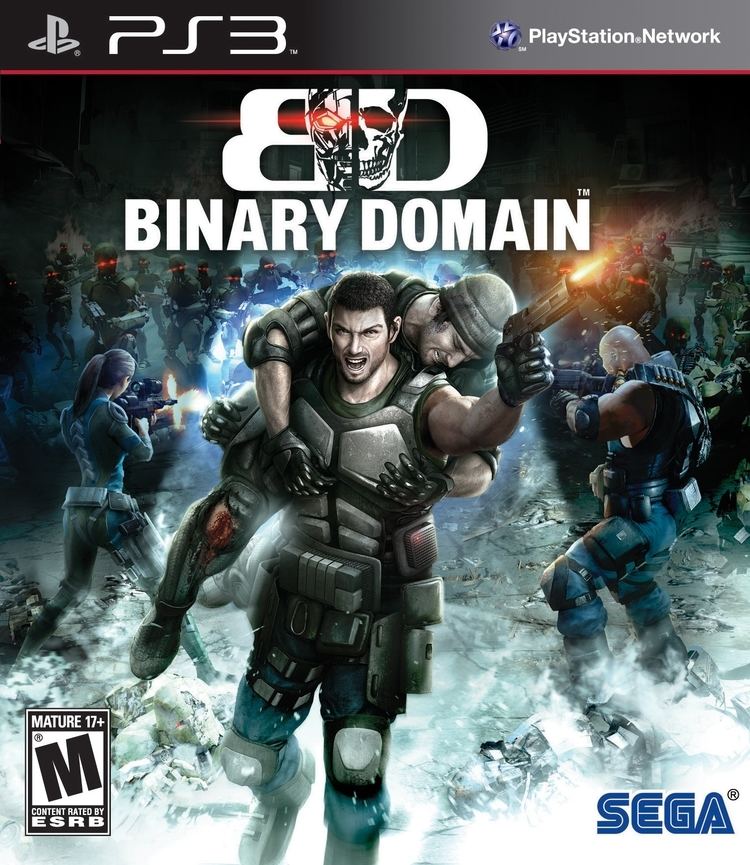 | ||||||||||||||||||||||||||||||||||
Director(s) Toshihiro NagoshiDaisuke Sato Producer(s) Masayoshi KikuchiJun Yoshino Composer(s) Mitsuharu FukuyamaGrandfunkNEWDEALGabiel RobertometalmouseSpacewalkerHeigo TaniMasao MaseLSIAtsuhiro WatanabeSoundDriveYuya SaitoToshihiro TanakaYuichi WakabayashiTakatsugu Wakabayashi Release date(s) PlayStation 3 & Xbox 360JP: February 16, 2012AU: February 23, 2012EU: February 24, 2012NA: February 28, 2012Microsoft WindowsWW: April 27, 2012 Developers Sega, Ryu ga Gotoku Studio, Amusement Vision Similar Sega games, Third-person shooter games | ||||||||||||||||||||||||||||||||||
Ign reviews binary domain game review
Binary Domain (バイナリー ドメイン, Bainarī Domein) is a third-person shooter video game developed and published by Sega. It was released for PlayStation 3 and Xbox 360 in February 2012 and Microsoft Windows in April 2012. The game is set in Tokyo, Japan, in the year 2080. It features innovative artificial intelligence technology.
Contents
- Ign reviews binary domain game review
- Binary domain gameplay trailer ps3 xbox 360
- Gameplay
- Multiplayer
- Plot
- Characters
- Development
- Marketing and release
- Critical reception
- Sales
- References
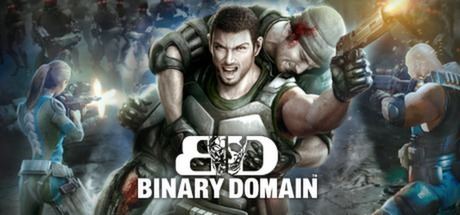
The game is set in a world where global warming had caused worldwide flooding, leaving much of the world uninhabitable. As a result, robots were used as the main labor force. The game features a consequence system, which decides how non-playable characters in the squad views and trusts the player in story mode. The game also features seven different multiplayer modes, with five classes being available for players to choose.
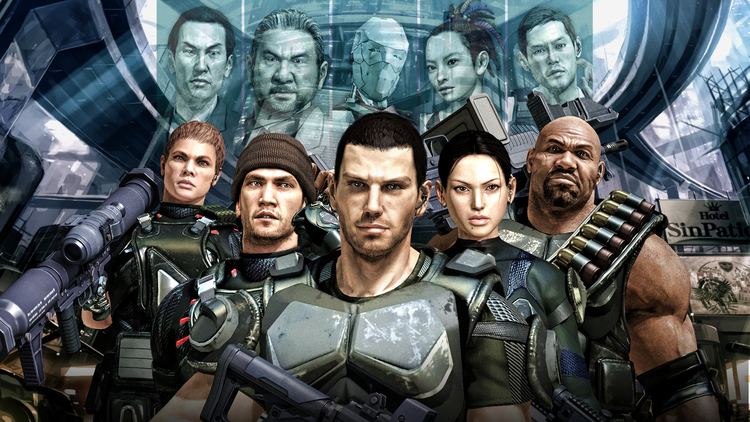
It was designed by Toshihiro Nagoshi, who created the Yakuza video game series. The characters of Binary Domain were created with making realistic personalities and behavior in mind. The Consequence System was created to make the game as a competitive game in the third person shooter genre. The game received mixed reviews upon launch, with critics praising the game's story and consequence system. However, it received criticisms regarding its voice recognition system. The game sold only 20,000 copies in North America by April 2012.
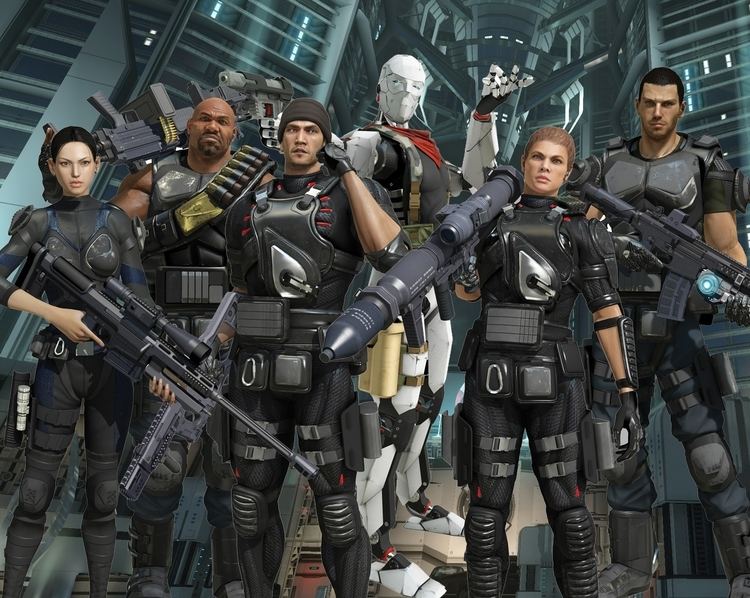
Binary domain gameplay trailer ps3 xbox 360
Gameplay
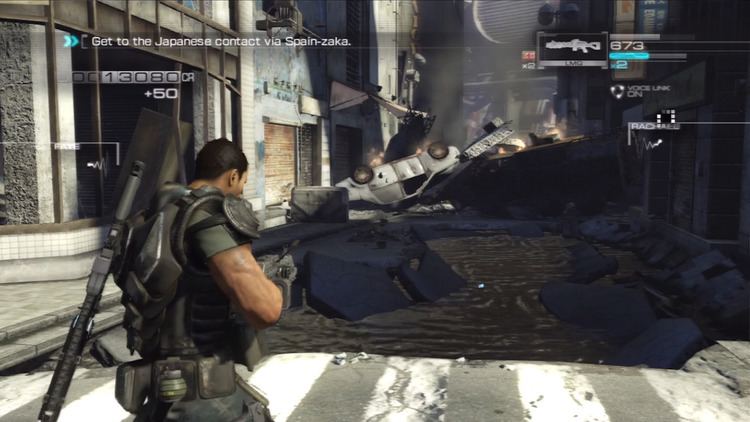
The player can issue commands to squad mates by pressing certain buttons or voice, either via a headset or the Kinect System using the voice command feature on the Xbox 360 console. The game's AI is able to recognize six different languages, including English and Japanese.
A major part of the game is its consequence system, which decides how the squad views and trusts the player in story mode. Their opinion of the player is based on how the player performs and treats team members. This affects both the storyline and gameplay, where the characters behave differently depending on trust levels. Conversations between the player and the squad members can also affect trust levels. The end of the game will change, depending on the level of trust the team members have in the player.
Stats of both the player and the squad members can be augmented with nanomachines that need to be fitted in place in a style similar to a jigsaw puzzle. These nanomachines, as well as weapon upgrades, can usually be bought at shops that the player can find throughout the game. The use of grenades in combat is supported through a visible parabolic arc, which helps players to adjust their aim. The enemy AIs in Binary Domain adjust themselves on how to fight back against the player's advance, depending on the situation. For example, they can work together in groups to flank the player's position or toss fragmentation grenades if the player is in one spot for too long. There are certain stages where player will need to navigate through dangerous obstacles and enemies in order to advance to the next stage.
Multiplayer
Several multiplayer classes are available: Scout, Sniper, Striker, Soldier, and Heavy Gunner. For the English localization, these classes were reported to consist of Special Operations, Recon, Demolitions, Assault, and Heavy Gunner. There are two factions, the Ministry of Homeland Affairs' Interior Security Administration Division and the resistance fighters. Multiplayer modes consist of Data Capture, Domain Control, Team Survival, Operation, Invasion, Team Deathmatch, and Free for All.
Plot
In the game's backstory, global warming had caused worldwide flooding, leaving much of the world uninhabitable. This forced the governments to build new cities above the waterline, using the ruined cities as foundations. Since much of the world's population had died, robots were used as the main labor force. An American-based company called Bergen controlled a very large majority of the world's robotic industries, making America much more powerful. A Japanese corporation named Amada tried to sue Bergen for stealing their technology in a patent dispute. Despite the fact that Amada was the first robotics company to create the first humanoid robot, the lawsuit failed, since Bergen had a great amount of influence, This resulted in Bergen controlling 95 percent of the robotics market.
World economic concerns lead to the creation of the "New Geneva Convention", a new set of international laws. One of the clauses outlined, Clause 21, banned research into robots that could pass for humans, called "Hollow Children" in the game. A majority of the world's countries agreed to sign the convention into law. An organization called the International Robotics Technology Association (IRTA) created a global task-force, nicknamed "Rust Crews", to deal with breaches of the convention.
Years after the treaty was signed, an android attacked Bergen's headquarters in Detroit, Michigan, previously having no idea that he was a robot himself. Believing that robotics genius and founder of Amada corporation, Yoji Amada, created the robot, the IRTA sent one of their Rust Crews to Japan to find Amada and bring him in for questioning under orders from the UN Security Council.
Characters
Development
Binary Domain was announced on December 1, 2010. Director Toshihiro Nagoshi said that the theme he wanted to explore was about life, especially when it was expressed through the use of robots. He stated that despite not being a fan of the robot genre, he wishes to use it as a major part of the game's drama. Several brands were promoted in the game, such as Nissin Foods, Shochiku, Timex and Tokyo Marui.
The characters of Binary Domain were created with making realistic personalities and behavior in mind. For the creation of Cain, Art Director Nobuaki Mitake said that he had to be careful not to make it visually similar to the enemy robots encountered by the Rust Crew. To this end, Cain was given a "bit of alien elements while giving personalities to his design and motions to make him a bit closer to human." There were unique animation sequences done for a variety of enemy robots as well in order to make them unique. Nagoshi stated that he intended to "create the human drama in the action moments, rather than showing them one after another in cutscenes." The development team acclaimed for the Yakuza series aimed to appeal to a global audience and worked closely with Sega Europe and its producer Jun Yoshino.
According to Takashi Atsu, one of the game's programmers, he said that the team used the Hierarchical Finite State Machine, which is an algorithm program used to determine many factors, such as the robot's condition and ally information to judge their next move. The creation of the Consequence System was done to make Binary Domain as a competitive game in the third person shooter genre. By using the system, it would allow players to reach out to the NPCs who fight alongside them in the game's story in conjunction with the trust levels. The development team has spent a lot of time recording lots of dialogue lines in order to market the game in more than six spoken languages.
Marketing and release
Several videos were released on the Internet detailing the everday life of Mr. Assault, which was an enemy robot in the game. The trailers for the game utilized licensed music not featured in the game. The trailer titled "The Machine Age Has Begun" was released in April 2011, featuring music from 65daysofstatic's "Aren't We All Running" and narrated by Faye Lee who speaks about the plot of the game as well as emphasizing the importance of the trust feature in game. In January 2012, a trailer titled "Bigger Than You Think" was released, using "When Things Explode" by Unkle, featuring Ian Astbury and primarily composed of in game cut scene clips mixed with gameplay. Playable demo versions were shown at the Electronic Entertainment Expo 2011 and Tokyo Game Show 2011.
Sega released a pre-order exclusive for the game's multiplayer mode, which consists of the exclusive multiplayer map, “Outside High-rise, Upper City", the new Ninja class and two multiplayer weapons, consisting of the Hoga Type 69 sniper rifle and the Yamato-0 revolver. Binary Domain was also released for the PC via Steam. Downloadable content was released for multiplayer, which consists of characters from the Yakuza, series such as Kazuma Kiryu. Other characters include Shun Akiyama, Ryuji Goda, and Goro Majima. released in Japan on March 13, 2012. Customers who made pre-orders in Japan were able to acquire free download codes for the Kazama multiplayer skin.
In November 2013, the game was made free for PlayStation Plus subscribers on the PlayStation 3.
Critical reception
Binary Domain received positive reviews from critics. Aggregating review websites GameRankings and Metacritic gave the PlayStation 3 version 74.50% and 72/100, the Xbox 360 version 74.27% and 74/100 and the PC version 63.29% and 68/100.
Famitsu gave the game scores of 10, 9, 9, and 7, adding up to a total score of 35 out of 40. Another Japanese magazine Dengeki PlayStation has given the game scores of 80, 85, 90, and 85, averaging out to 85 out of 100.
GameSpot criticized the lag in multiplayer and that voice commands do not always get recognized by the game. Computer and Video Games shared GameSpot's criticism of the voice recognition system which was considered to be 'largely terrible' and was also unimpressed by the AI and level designs. They did, however, appreciate the interactive story elements. Eurogamer praised the lack of music as it allows gamers to factor in noise and in-game effects to determine their gaming strategy
IGN noted that the game was somewhat derivative but nevertheless considered it to be "a fresh and often thrilling experience, with only a handful of negatives holding it back from greatness."
In a retrospective article published in 2015 Jon Gregory of Game Informer said he considered the game to be "one of the best third-person shooters from the last generation."
Sales
Despite favorable reviews, the game had only sold 20,000 copies in North America by April 2012. In Japan, it sold 73,683 copies when it was released, being the #2 game sold at the time.
